The mid-sized SUV market has become increasingly competitive, with consumers seeking a blend of performance, comfort, and cutting-edge technology. In this article, we will compare two popular models: the Mazda CX-5 and the Volvo XC40. Both vehicles boast impressive features, but they cater to different preferences. Let's dive deeper into their technical specifications, innovations, and overall performance.
Mazda CX-5 vs Volvo XC40 – Which model is better for everyday use?
Compare performance, boot capacity, efficiency and price at a glance.
Find out which car is the better choice for you – Mazda CX-5 or Volvo XC40?
Design and Dimensions
The Mazda CX-5 presents a sleek and sporty design, standing at 4575 mm in length, 1845 mm in width, and 1680 mm in height. Its bold front grille and flowing lines contribute to a more dynamic appearance. In contrast, the Volvo XC40 is slightly smaller at 4425 mm long, 1863 mm wide, and 1652 mm high. This compact SUV has a more minimalist and elegant design, typical of Volvo's Scandinavian ethos.
Performance Features
When it comes to engines, the Mazda CX-5 offers flexibility with options for petrol MHEV and diesel engines, delivering power outputs ranging from 150 to 194 HP, depending on the configuration. Its engines provide impressive torque figures, with the maximum reaching 445 Nm, ensuring a spirited driving experience. Furthermore, the CX-5 can accelerate from 0-100 km/h in as little as 9.2 seconds, highlighting its sporty nature.
On the other hand, the Volvo XC40 is equipped solely with petrol MHEV engines, producing between 163 to 197 HP. The torque of the XC40 peaks at 300 Nm, providing ample power for both city and highway driving. This model boasts faster acceleration times, capable of reaching 0-100 km/h in just 7.6 seconds, making it a performance-oriented choice.
Driving Dynamics and Comfort
The CX-5 can be configured with either front-wheel drive or all-wheel drive, allowing for better handling across various terrains. Its suspension system strikes a balance between comfort and sportiness, making it enjoyable for both daily commuting and long-distance driving.
Meanwhile, the XC40 features front-wheel drive and utilizes a dual-clutch automatic transmission, providing rapid gear shifts and a smooth driving experience. The XC40 is celebrated for its comfort and refinement, featuring a spacious interior that prioritizes passenger comfort and a quiet ride, characteristic of the Volvo brand.
Fuel Efficiency and Emissions
In terms of fuel efficiency, both SUVs are competitive. The Mazda CX-5 showcases various configurations that can achieve consumption figures as low as 5.6 L/100km, depending on the engine choice. The CO2 emissions range from 146 to 173 g/km, depending on the variant, placing it in the E and F efficiency classes.
The Volvo XC40, however, matches this performance with a consumption figure of just 6.5 L/100km and an impressive CO2 emission rating of 147 g/km, also placing it in the E efficiency class. This demonstrates Volvo's commitment to sustainability without compromising performance.
Interior Technology and Safety Innovations
Inside, the Mazda CX-5 features an intuitive layout with a focus on driver engagement. The infotainment system, while functional, has drawn critiques for its somewhat dated interface compared to competitors. Mazda offers various tech options, including advanced safety features that enhance drive assistance and occupant protection.
The XC40, in contrast, comes equipped with Volvo's latest infotainment system, integrating Google services for a more connected experience. This user-friendly system is lauded for its responsiveness and seamless smartphone compatibility. Additionally, Volvo is renowned for its emphasis on safety, offering a comprehensive suite of driver-assistance systems as standard, further reinforcing its reputation as a leader in this arena.
Conclusion
Choosing between the Mazda CX-5 and the Volvo XC40 ultimately depends on individual preferences. The CX-5 shines for those seeking a sporty design and versatile engine options. In contrast, the XC40 appeals to buyers who prioritize performance, cutting-edge technology, and comfort.
Both models provide excellent value in the mid-sized SUV segment, ensuring they remain popular choices for year-round driving. Whether you lean towards the spirited handling of the CX-5 or the refined luxury of the XC40, both vehicles represent the best of their respective brands.
Here’s where it gets real: The technical differences in detail
Costs and Efficiency:
Price and efficiency are often the first things buyers look at. Here it becomes clear which model has the long-term edge – whether at the pump, the plug, or in purchase price.
Mazda CX-5 has a distinct advantage in terms of price – it starts at 30000 £, while the Volvo XC40 costs 36800 £. That’s a price difference of around 6762 £.
Fuel consumption also shows a difference: Volvo XC40 manages with 6.50 L and is therefore minimal more efficient than the Mazda CX-5 with 7 L. The difference is about 0.50 L per 100 km.
Engine and Performance:
Power, torque and acceleration are the classic benchmarks for car enthusiasts – and here, some clear differences start to show.
When it comes to engine power, the Volvo XC40 has a noticeable edge – offering 197 HP compared to 141 HP. That’s roughly 56 HP more horsepower.
In acceleration from 0 to 100 km/h, the Volvo XC40 is distinct quicker – completing the sprint in 7.60 s, while the Mazda CX-5 takes 10.50 s. That’s about 2.90 s faster.
In terms of top speed, the Mazda CX-5 performs hardly perceptible better – reaching 195 km/h, while the Volvo XC40 tops out at 180 km/h. The difference is around 15 km/h.
There’s also a difference in torque: Volvo XC40 pulls distinct stronger with 300 Nm compared to 238 Nm. That’s about 62 Nm difference.
Space and Everyday Use:
Whether family car or daily driver – which one offers more room, flexibility and comfort?
Both vehicles offer seating for 5 people.
In curb weight, Mazda CX-5 is minimal lighter – 1629 kg compared to 1688 kg. The difference is around 59 kg.
In terms of boot space, the Mazda CX-5 offers noticeable more room – 583 L compared to 452 L. That’s a difference of about 131 L.
In maximum load capacity, the Mazda CX-5 performs evident better – up to 2019 L, which is about 691 L more than the Volvo XC40.
Who wins the race?
The Volvo XC40 proves to be edges out slightly and therefore becomes our DriveDuel Champion!
Volvo XC40 is the better all-rounder in this comparison.
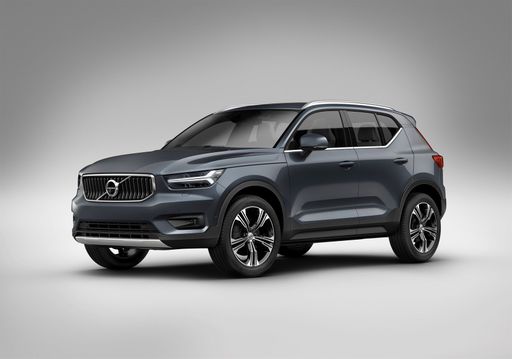 @ Volvo Cars
@ Volvo Cars
Volvo XC40
Mazda CX-5
The Mazda CX-5 blends elegant, athletic styling with a surprisingly engaging driving character, turning routine trips into small, satisfying adventures. Inside it feels thoughtfully built and comfortable, offering sensible practicality and a premium feel that punches above its price.
details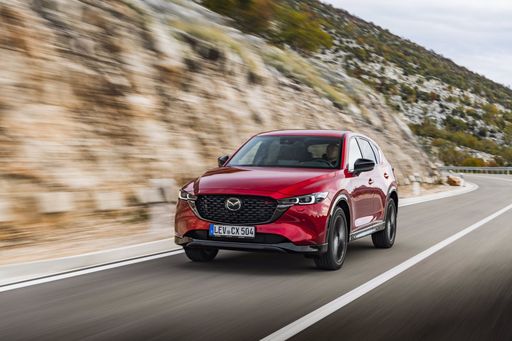 @ Mazda Motor Corporation
@ Mazda Motor Corporation
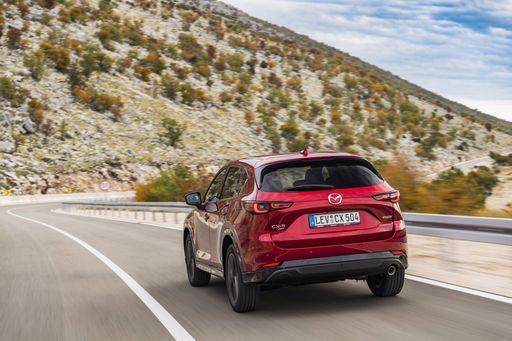 @ Mazda Motor Corporation
@ Mazda Motor Corporation
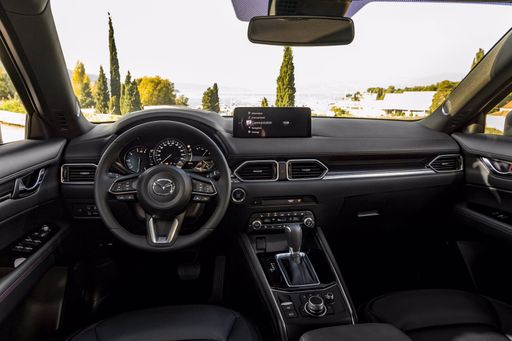 @ Mazda Motor Corporation
@ Mazda Motor Corporation
Volvo XC40
The Volvo XC40 wraps Scandinavian minimalism into a compact, city-ready SUV with a premium cabin that feels both practical and grown-up. It will suit buyers who prize safety, clever storage and a composed ride, proving that small dimensions don't mean small personality.
details @ Volvo Cars
@ Volvo Cars
 @ Volvo Cars
@ Volvo Cars
 @ Volvo Cars
@ Volvo Cars
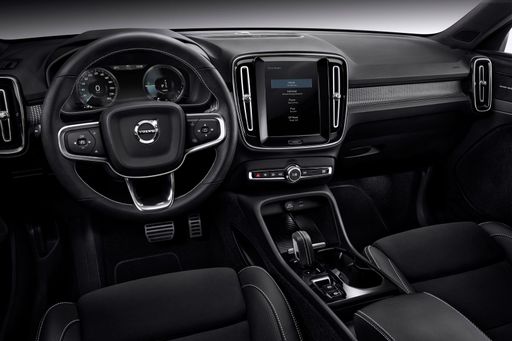 @ Volvo Cars
@ Volvo Cars
 @ Volvo Cars
@ Volvo Cars
 @ Mazda Motor Corporation
@ Mazda Motor Corporation
|
 @ Volvo Cars
@ Volvo Cars
|
|
|
|
Costs and Consumption |
|
|---|---|
|
Price
30000 - 39500 £
|
Price
36800 - 47200 £
|
|
Consumption L/100km
7 - 7.4 L
|
Consumption L/100km
6.50 L
|
|
Consumption kWh/100km
-
|
Consumption kWh/100km
-
|
|
Electric Range
-
|
Electric Range
-
|
|
Battery Capacity
-
|
Battery Capacity
-
|
|
co2
157 - 168 g/km
|
co2
147 - 148 g/km
|
|
Fuel tank capacity
56 - 58 L
|
Fuel tank capacity
54 L
|
Dimensions and Body |
|
|---|---|
|
Body Type
SUV
|
Body Type
SUV
|
|
Seats
5
|
Seats
5
|
|
Doors
5
|
Doors
5
|
|
Curb weight
1629 - 1671 kg
|
Curb weight
1688 kg
|
|
Trunk capacity
583 L
|
Trunk capacity
452 L
|
|
Length
4690 mm
|
Length
4425 mm
|
|
Width
1860 mm
|
Width
1863 mm
|
|
Height
1695 mm
|
Height
1652 mm
|
|
Max trunk capacity
2019 L
|
Max trunk capacity
1328 L
|
|
Payload
-
|
Payload
532 kg
|
Engine and Performance |
|
|---|---|
|
Engine Type
Petrol MHEV
|
Engine Type
Petrol MHEV
|
|
Transmission
Automatic
|
Transmission
Automatic
|
|
Transmission Detail
Automatic Gearbox
|
Transmission Detail
Dual-Clutch Automatic
|
|
Drive Type
Front-Wheel Drive, All-Wheel Drive
|
Drive Type
Front-Wheel Drive
|
|
Power HP
141 HP
|
Power HP
163 - 197 HP
|
|
Acceleration 0-100km/h
10.5 - 10.9 s
|
Acceleration 0-100km/h
7.6 - 8.6 s
|
|
Max Speed
195 km/h
|
Max Speed
180 km/h
|
|
Torque
238 Nm
|
Torque
265 - 300 Nm
|
|
Number of Cylinders
4
|
Number of Cylinders
4
|
|
Power kW
104 kW
|
Power kW
120 - 145 kW
|
|
Engine capacity
2488 cm3
|
Engine capacity
1969 cm3
|
General |
|
|---|---|
|
Model Year
2025
|
Model Year
2024
|
|
CO2 Efficiency Class
F
|
CO2 Efficiency Class
E
|
|
Brand
Mazda
|
Brand
Volvo
|
What drivetrain options does the Mazda CX-5 have?
The Mazda CX-5 is offered with Front-Wheel Drive or All-Wheel Drive.
The prices and data displayed are estimates based on German list prices and may vary by country. This information is not legally binding.
